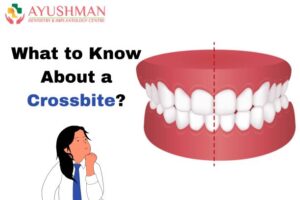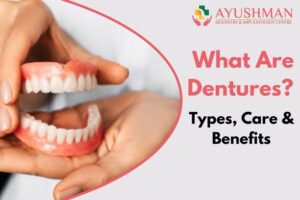Halitosis (Bad Breath): What It Is, Causes & Treatment

Halitosis (Bad Breath): What It Is, Causes & Treatment
Bad breath, also known as halitosis, is a widespread issue affecting many people. While poor oral hygiene is the most common culprit, other health conditions can contribute to unpleasant odors. This article explores the causes, treatments, and prevention methods for achieving fresh breath.
What is Halitosis?
Halitosis refers to persistent bad breath. Everyone experiences occasional bad breath, especially after eating strong-smelling foods. However, chronic halitosis might indicate underlying oral health problems or other health issues. Consider halitosis a warning sign for your body.
How Common is Bad Breath?
Studies estimate that roughly 1 in 4 people globally struggle with bad breath. Research combining findings from multiple medical journals suggests a prevalence of around 31.8%.
Causes of Bad Breath
The primary symptom of halitosis is persistent bad breath with a noticeable odor.
Poor Oral Hygiene: The most frequent cause of bad breath is inadequate oral hygiene. When you don’t brush, floss, and get regular dental cleanings, harmful bacteria flourish in your mouth. This bacterial overgrowth can lead to various oral health problems, including bad breath, cavities, and gum disease.
Beyond Brushing: Other Causes of Bad Breath
While poor oral hygiene is the most common cause, other factors can contribute to bad breath:
- Dry Mouth: Saliva plays a crucial role in cleaning your mouth. Reduced saliva production, often caused by smoking or certain medications, can lead to halitosis.
- Medical Conditions: Certain medical conditions, like GERD (gastroesophageal reflux disease), tonsil stones, or infections in the nose, throat, or lungs, can contribute to bad breath.
- Systemic Diseases: Liver or kidney disease can lead to bad breath as the body struggles to eliminate toxins.
- Sjögren’s Syndrome: This autoimmune disease can cause dry mouth, a frequent contributor to bad breath.
Persistent Bad Breath: A Sign to See Your Dentist
If you experience chronic bad breath, schedule a dental appointment. For bad breath caused by poor oral hygiene, a dental cleaning or gum treatment can make a significant difference. If your dentist determines healthy teeth and gums, the bad breath may be linked to another health issue requiring further investigation from your doctor.
How is halitosis treated?
The treatment for halitosis depends on the underlying cause. For instance, if poor oral hygiene is the culprit, improved brushing, flossing, and professional cleanings will likely resolve the issue.
However, if halitosis stems from another medical condition, your doctor will develop a treatment plan to address the root cause. Occasionally, your dentist may recommend special mouthwashes to combat specific bacteria.
How can I permanently get rid of bad breath?
There’s no magic bullet for permanent bad breath elimination. Masking the odor with mints or gum offers only temporary relief. Effective treatment hinges on addressing the underlying cause. Once healthcare professionals identify the culprit, they can create a personalized treatment plan to achieve long-lasting fresh breath.
How can I prevent halitosis?
Maintaining good oral hygiene is the cornerstone of bad breath prevention. Here are some key practices:
- Brush twice daily for at least two minutes each time, and floss once a day. Don’t forget to clean your tongue with a brush or scraper.
- Use an alcohol-free antibacterial mouthwash.
- Schedule regular dental checkups and cleanings, typically every six months for most people. More frequent visits might be necessary for some individuals.
- Stay hydrated by drinking plenty of water to prevent dry mouth.
- Stimulate saliva production with sugar-free gum, sugar-free candy, or crunchy foods. Your dentist may recommend products to produce artificial saliva or stimulate natural saliva production.
- Limit alcohol, caffeine, and tobacco products, as they contribute to dry mouth.
Brushing and Flossing Techniques for Optimal Results
- Use a soft-bristled toothbrush that allows you to reach all areas of your mouth. Replace your toothbrush every three to four months, or sooner if it shows signs of wear.
- Brush at a 45-degree angle toward your gums using short strokes, about the width of a tooth. Ensure you clean the outer, inner, and chewing surfaces of each tooth.
- Avoid aggressive brushing or using a hard-bristled brush, which can damage your gums.
Flossing removes plaque and debris from areas unreachable by your toothbrush. Here’s a proper flossing technique:
- Break off around 18 inches of floss and wrap it around your middle fingers.
- Secure the floss tightly with your thumbs and forefingers, leaving an inch or two of floss between them.
- Gently guide the floss between your teeth, then curve it around one tooth in a “C” shape. Slide the floss up and down the tooth surface seven to ten times. Remember, friction is essential for plaque removal. While water flossers can remove larger food particles, they shouldn’t replace regular flossing.
- Repeat these steps for each tooth contact area. If you’re new to flossing, you might experience some initial bleeding and discomfort, but this should subside within a few days.
Conclusion
Bad breath, while a common concern, shouldn’t be a source of embarrassment. It’s often a sign from your body that something needs attention. The good news is that halitosis is usually treatable by addressing the underlying cause. Working together, your dentist and primary care physician can help you achieve fresh breath and optimal oral health.









